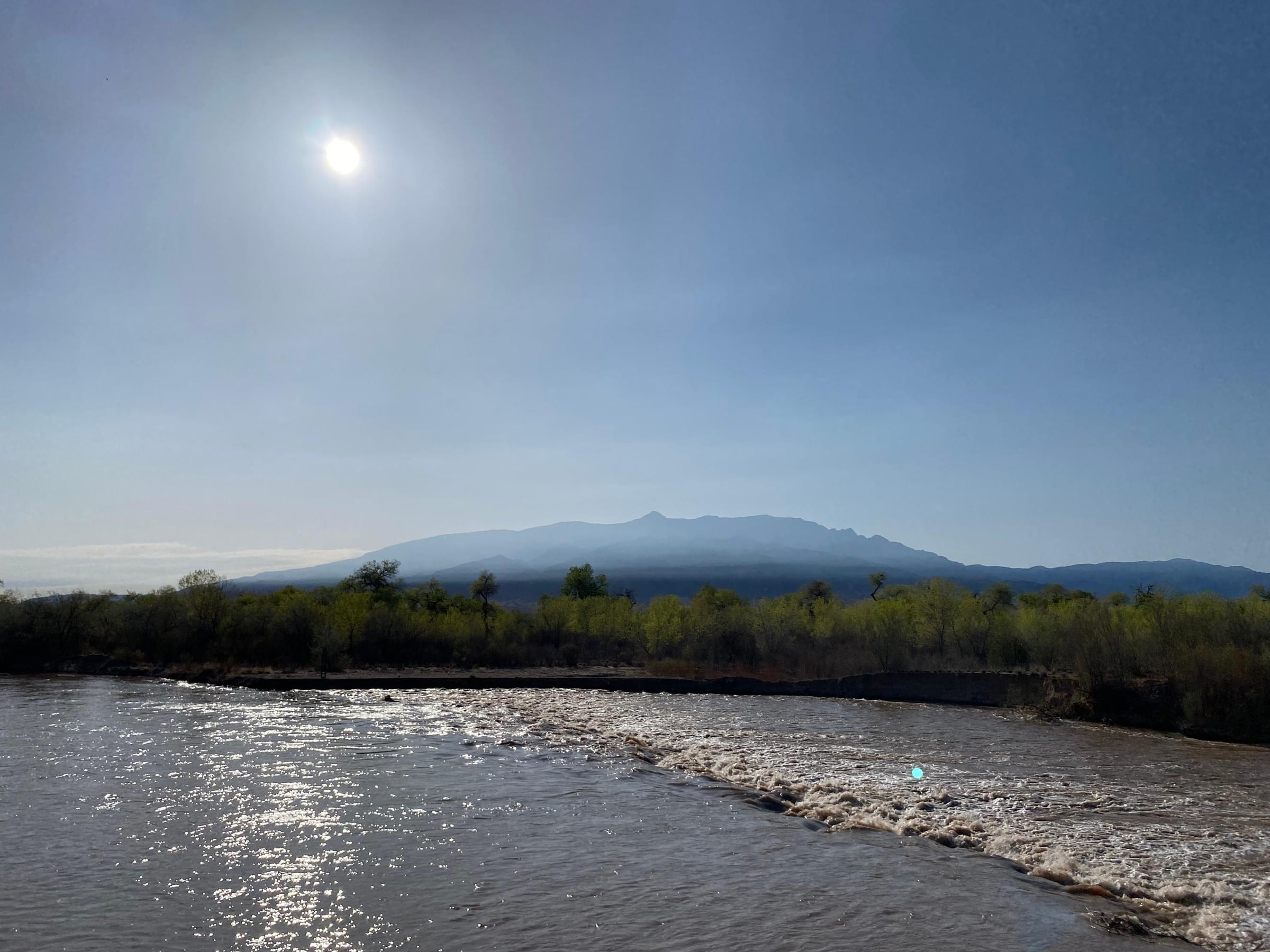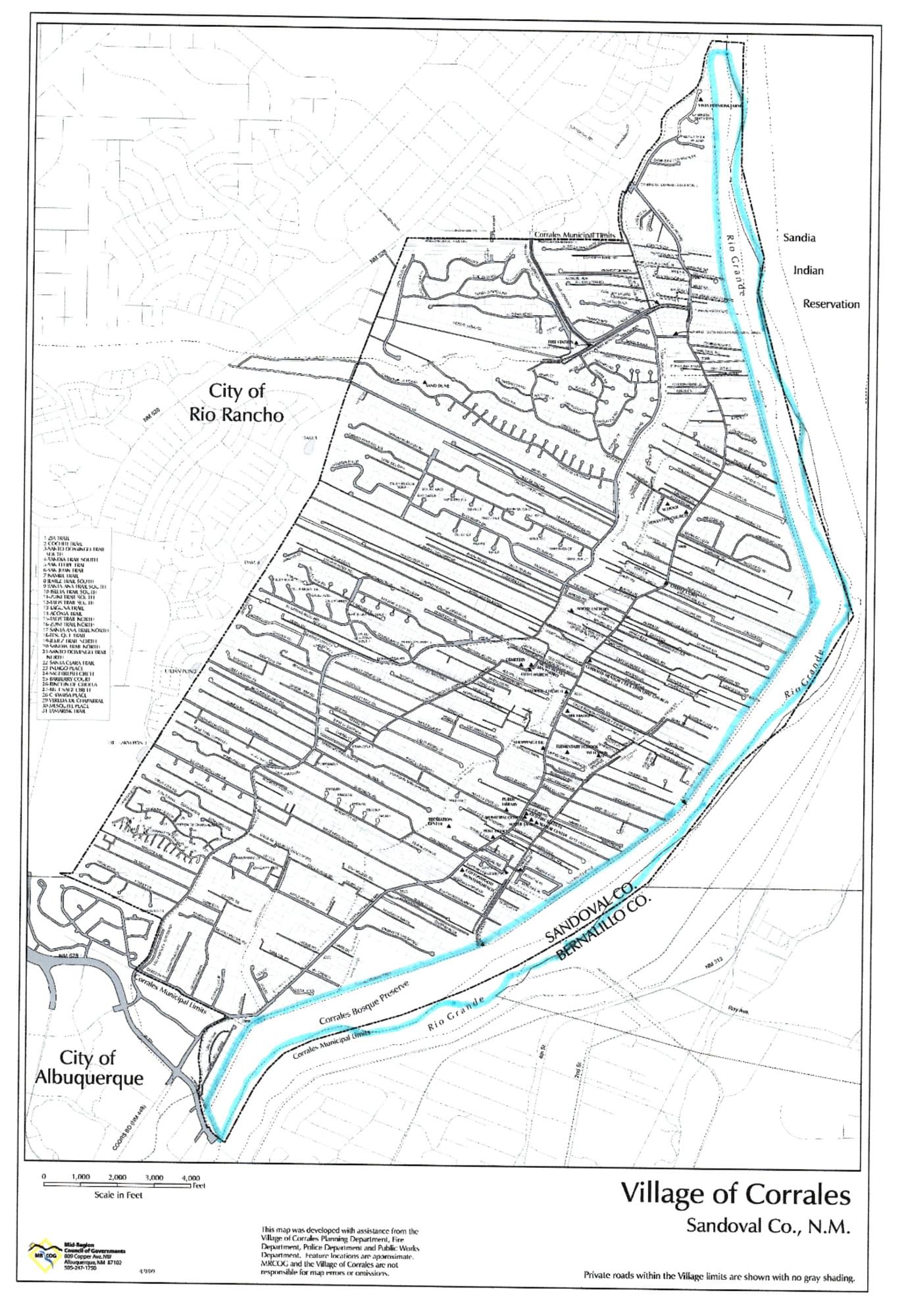Corrales Bosque--Northernmost

Corrales Bosque--Northernmost
Corrales, New Mexico 87048
Corrales Bosque Official WebsiteCorrales Bosque Preserve webpage
Corrales Bosque Preserve brochure
Tips for Birding
Park at the end of the road in the large dirt lot right along the river. This hotspot has a lot of options for where to bird, so you can choose to cover one area or spend a bunch of time exploring all around. If you walk south from the parking area, there will be a wide trail with wood chips that leads into the bosque. This is the north end of the bosque trail that you can take all the way down to Alameda if you want, but from here you can just explore the riparian habitat around the northernmost hotspot. Unfortunately, a loud diesel pump has recently been installed here, making birding by ear more difficult. If you continue on the big ditch road past that trailhead (to the right/west of that trail), you'll eventually come to some gates in front of the levee trail. This also runs all the way south to Alameda and can be a great spot to get access to the riverside drain, which is unfortunately not vegetated here but has good cattail and bullrush marshes some summers. There are also large tree farms a little way down the levee to the west. The levee trail and Bosque trail connect in a few places. If you go north of the parking area, you can either take the trail down into the willow stands or up the hill. Both of them bring you to pretty much the same place, so it doesn't completely matter. Once you hit the big sandy arroyo (you'll know when you hit it), you have a little bit more bosque habitat before the big sandy cliffs of the Rio Rancho bosque. If you take any trail north, you'll eventually end up on the bike trail on top of the cliffs overlooking the river, and this can be a great spot to do a flight watch for waterfowl, migrants, etc. There is also more arid habitat up to the west where Curve-billed Thrashers and Gambel's Quail often hang out.
About Corrales Bosque
See all hotspots at Corrales Bosque
The Corrales Bosque Preserve consists of a narrow strip of land containing a natural cottonwood forest and associated riparian habitats that include shrubs such as coyote willow and New Mexico olive. The Preserve runs west from the Rio Grande to 1) north of Coroval Road, the west side of the Sandoval lateral irrigation ditch, and 2) south of Coroval Road, the west side of the Corrales Riverside Drain (“clear ditch”). Additional boundaries of the Preserve are south at the Alameda Bridge and north at Siphon Road.
In 1978 the Corrales Bosque Preserve was declared a protected area. The Village of Corrales oversees the Preserve to maintain it as a Natural Area and Wildlife Preserve.
Riparian habitats are particularly important for avian communities in the arid Southwest. As such, the Preserve was designated as an Important Bird Area (IBA) in 2013. Many bird species nest in this area and the endangered Southwestern Willow Flycatcher and the Western Yellow-billed Cuckoo, a species of conservation concern, have been observed in the bosque habitats. The Preserve is also an important stopover habitat for many migrants that pass through on their ways south and north, and it provides habitat for wintering Bald Eagles.
Corrales Bosque Important Bird Area is located on the west side of the Rio Grande within the limits of the Village of Corrales. Corrales Bosque Preserve is a narrow strip of relatively natural riparian habitat bounded by the Corrales Siphon on the north, the Alameda Boulevard bridge on the south, the western low water line of the Rio Grande on the east, and on the west by the Sandoval Lateral Canal and the Corrales Riverside Drain. The Corrales Riverside Drain (known as the Clear Ditch) runs the entire length of the Preserve.
Parking is available at the south end (Alameda bridge) and north end (Siphon Road). Limited parking is available at Romero Road. Be courteous to residents and do not block gates and driveways, and do not block access points for the Fire and Police Departments.
Features
Wheelchair accessible trail
Restrooms on site
Entrance fee
Roadside viewing
Content from Corrales Bosque Official Website, Corrales Bosque Preserve webpage, and Owen Sinkus
Last updated May 16, 2023
